Showing Spotlights 49 - 56 of 199 in category All (newest first):
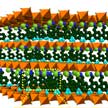 Due to the unique physical and chemical characteristics, such as good electrical conductivity, low weight, large surface areas, high electrochemical activity, and facile doping of heteroatoms or inorganic species, there are increasing demands of fabricating two-dimensional (2D) porous carbon for lithium-ion batteries, supercapacitors, electrochemical catalysts and many other emerged applications in energy storage and conversion. Researchers now have developed a fast, scalable, and eco-friendly active-salt-templating strategy to engineer different types of 2D porous carbons.
Due to the unique physical and chemical characteristics, such as good electrical conductivity, low weight, large surface areas, high electrochemical activity, and facile doping of heteroatoms or inorganic species, there are increasing demands of fabricating two-dimensional (2D) porous carbon for lithium-ion batteries, supercapacitors, electrochemical catalysts and many other emerged applications in energy storage and conversion. Researchers now have developed a fast, scalable, and eco-friendly active-salt-templating strategy to engineer different types of 2D porous carbons.
Dec 21st, 2018
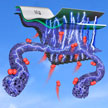 Recently, researchers have engineered a next-generation battery technology - known as metal-air batteries - which can be easily fabricated into flexible and wristband-like cells. Although metal-air batteries powered devices still are not ready yet for commercial applications, the current studies have established solid evidence that these devices have provided enormous opportunities to develop the next generation of flexible, wearable and bio-adaptable power sources. Researchers now report a solution to overcoming the current limitation on sluggish reaction kinetics of air cathodes in Mg-air batteries.
Recently, researchers have engineered a next-generation battery technology - known as metal-air batteries - which can be easily fabricated into flexible and wristband-like cells. Although metal-air batteries powered devices still are not ready yet for commercial applications, the current studies have established solid evidence that these devices have provided enormous opportunities to develop the next generation of flexible, wearable and bio-adaptable power sources. Researchers now report a solution to overcoming the current limitation on sluggish reaction kinetics of air cathodes in Mg-air batteries.
Nov 20th, 2018
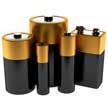 For the most part, advances in energy storage will rely on the continuing development of materials science, pushing the limits of performance of existing battery materials and developing entirely new battery structures and compositions. The battery industry is already working to reduce the cost of lithium-ion batteries, including by removing expensive cobalt from their positive electrodes. Researchers also are looking at the possibilities of using two-dimensional materials, essentially extremely thin sheets of substances with useful electronic properties.
For the most part, advances in energy storage will rely on the continuing development of materials science, pushing the limits of performance of existing battery materials and developing entirely new battery structures and compositions. The battery industry is already working to reduce the cost of lithium-ion batteries, including by removing expensive cobalt from their positive electrodes. Researchers also are looking at the possibilities of using two-dimensional materials, essentially extremely thin sheets of substances with useful electronic properties.
Oct 4th, 2018
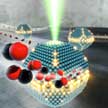 By combining advanced high-precision electron microscopy and computational methods, researchers have shed new light on the role of strain in nanoparticle catalysis. Catalytic metal nanoparticles supported on oxide substrates are used on a large scale in technological applications such as production of chemicals, abatement of air pollution and sustainable energy systems. The overall performance and durability of these systems is influenced by a range of factors, and every improvement could result in noticeable environmental and economic benefits.
By combining advanced high-precision electron microscopy and computational methods, researchers have shed new light on the role of strain in nanoparticle catalysis. Catalytic metal nanoparticles supported on oxide substrates are used on a large scale in technological applications such as production of chemicals, abatement of air pollution and sustainable energy systems. The overall performance and durability of these systems is influenced by a range of factors, and every improvement could result in noticeable environmental and economic benefits.
Jul 31st, 2018
 Spider silk fibers show nature's most outstanding mechanical properties, for example, excellent tensile strength and elasticity, and remarkable protein sequence structure. So far, it has remained completely unidentified how the mechanical properties of spider silk fibers effectively contribute to the performance of a piezoelectric nanogenerator. Now, researchers have successfully demonstrated by Piezoresponse Force Microscopy experiment that natural spider silk fibers have a definite vertical (out-of-plane) piezoelectric coefficient.
Spider silk fibers show nature's most outstanding mechanical properties, for example, excellent tensile strength and elasticity, and remarkable protein sequence structure. So far, it has remained completely unidentified how the mechanical properties of spider silk fibers effectively contribute to the performance of a piezoelectric nanogenerator. Now, researchers have successfully demonstrated by Piezoresponse Force Microscopy experiment that natural spider silk fibers have a definite vertical (out-of-plane) piezoelectric coefficient.
Jun 14th, 2018
 As a promising large-scale energy storage technology, redox flow batteries (RFBs) are attracting increasingly more research attention. For RFB separators, the essential requirement is achieving high ionic conductivity with minimal cross-over at low cost. Researchers now have demonstrated a proof-of-concept graphene oxide (GO) membrane as separator for large-scale energy RFBs. Their work shows that the two-dimensional nanochannel structure and low frictional water flow inside micrometer-thick GO laminates make this material an attractive candidate membrane for large-scale energy storage systems.
As a promising large-scale energy storage technology, redox flow batteries (RFBs) are attracting increasingly more research attention. For RFB separators, the essential requirement is achieving high ionic conductivity with minimal cross-over at low cost. Researchers now have demonstrated a proof-of-concept graphene oxide (GO) membrane as separator for large-scale energy RFBs. Their work shows that the two-dimensional nanochannel structure and low frictional water flow inside micrometer-thick GO laminates make this material an attractive candidate membrane for large-scale energy storage systems.
Apr 17th, 2018
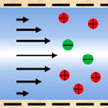 The ability of nanochannels to regulate transported substances in confined spaces is of great research interest in innovative applications, such as high-resolution sensing, filtering, and high-efficiency energy utilization. In the last area, research on nanochannels in energy-related areas continues to face challenges such as low efficiencies, complex preparation processes, and high fabrication costs. Overcoming these challenges is an important and difficult task in the field of energy conversion, energy conservation, and energy recovery.
The ability of nanochannels to regulate transported substances in confined spaces is of great research interest in innovative applications, such as high-resolution sensing, filtering, and high-efficiency energy utilization. In the last area, research on nanochannels in energy-related areas continues to face challenges such as low efficiencies, complex preparation processes, and high fabrication costs. Overcoming these challenges is an important and difficult task in the field of energy conversion, energy conservation, and energy recovery.
Apr 10th, 2018
 Enzymatic biofuel cells (EBFCs) are bioelectronic devices that utilize enzymes as the electrocatalysts to catalyze the oxidation of fuel and/or the reduction of oxygen or peroxide for energy conversion to electricity. EBFCs have already been demonstrated as wearable epidermal tattoo biosensors and in new work, researchers report the fabrication flexible EBFCs with flexible nanoporous gold electrodes that were modified with lactate oxidase and bilirubin oxidase for use as a lactate/O2 biofuel cell.
Enzymatic biofuel cells (EBFCs) are bioelectronic devices that utilize enzymes as the electrocatalysts to catalyze the oxidation of fuel and/or the reduction of oxygen or peroxide for energy conversion to electricity. EBFCs have already been demonstrated as wearable epidermal tattoo biosensors and in new work, researchers report the fabrication flexible EBFCs with flexible nanoporous gold electrodes that were modified with lactate oxidase and bilirubin oxidase for use as a lactate/O2 biofuel cell.
Mar 6th, 2018
 Due to the unique physical and chemical characteristics, such as good electrical conductivity, low weight, large surface areas, high electrochemical activity, and facile doping of heteroatoms or inorganic species, there are increasing demands of fabricating two-dimensional (2D) porous carbon for lithium-ion batteries, supercapacitors, electrochemical catalysts and many other emerged applications in energy storage and conversion. Researchers now have developed a fast, scalable, and eco-friendly active-salt-templating strategy to engineer different types of 2D porous carbons.
Due to the unique physical and chemical characteristics, such as good electrical conductivity, low weight, large surface areas, high electrochemical activity, and facile doping of heteroatoms or inorganic species, there are increasing demands of fabricating two-dimensional (2D) porous carbon for lithium-ion batteries, supercapacitors, electrochemical catalysts and many other emerged applications in energy storage and conversion. Researchers now have developed a fast, scalable, and eco-friendly active-salt-templating strategy to engineer different types of 2D porous carbons.
 Subscribe to our Nanotechnology Spotlight feed
Subscribe to our Nanotechnology Spotlight feed





